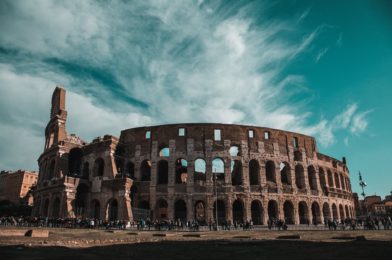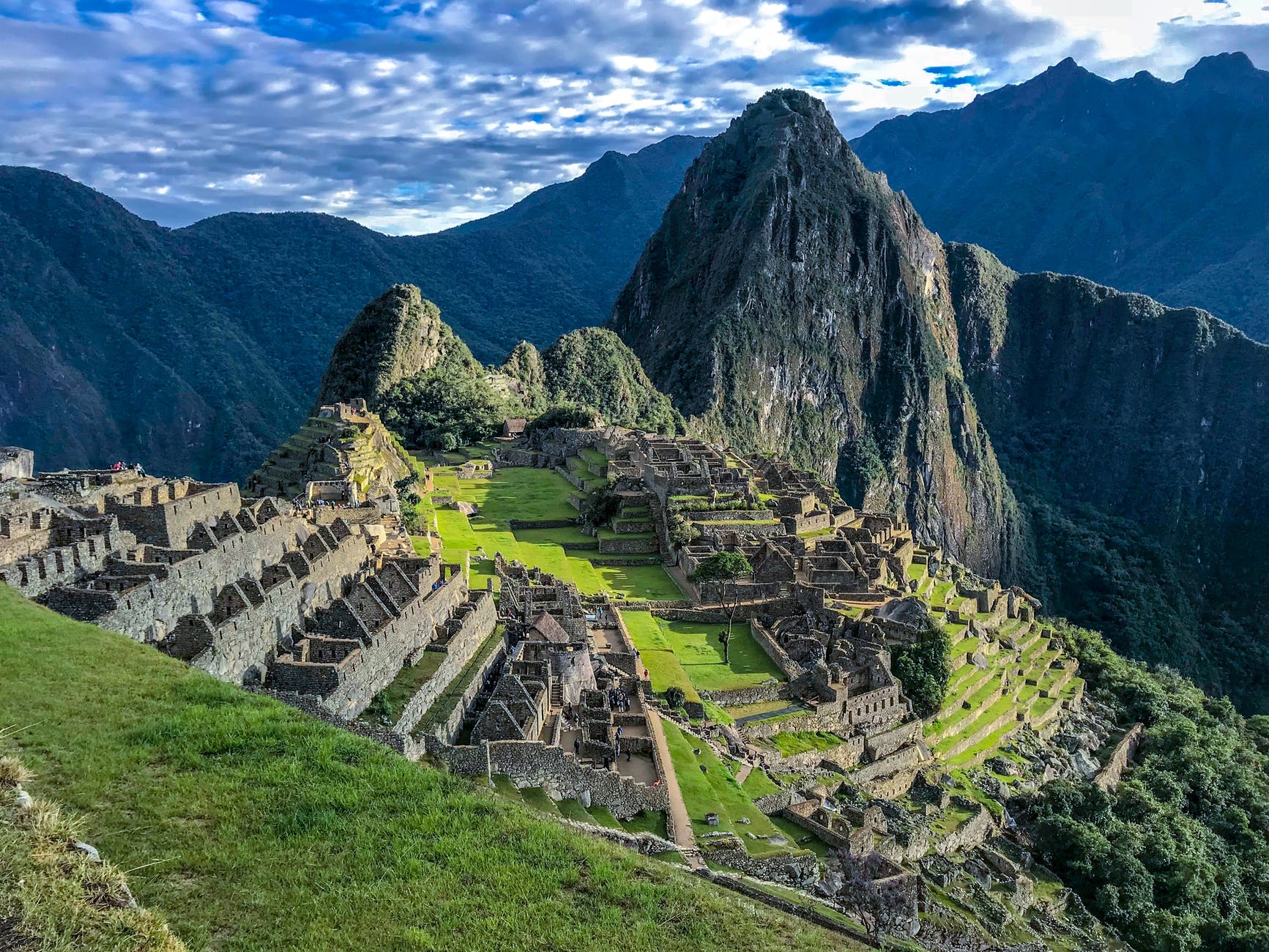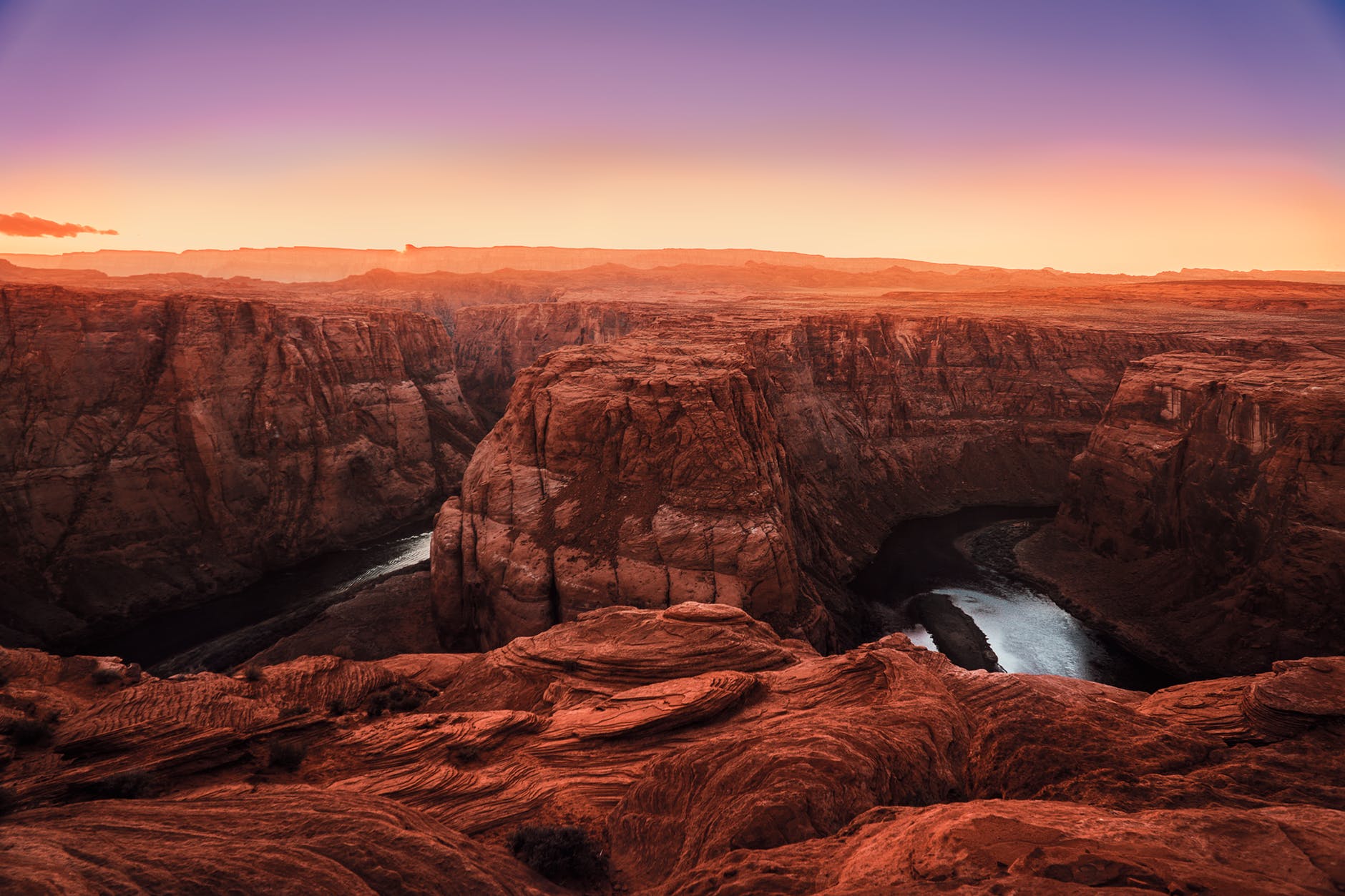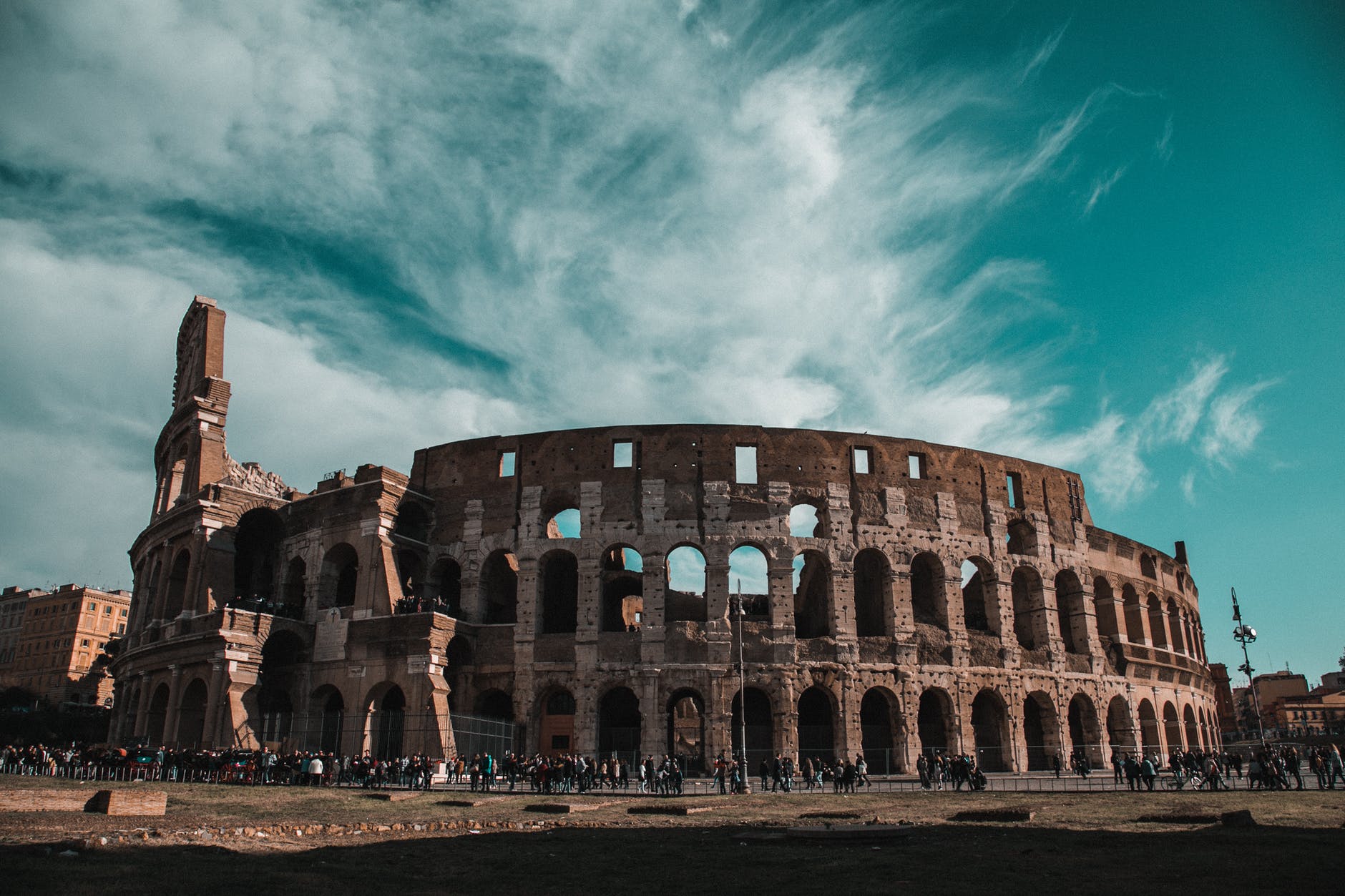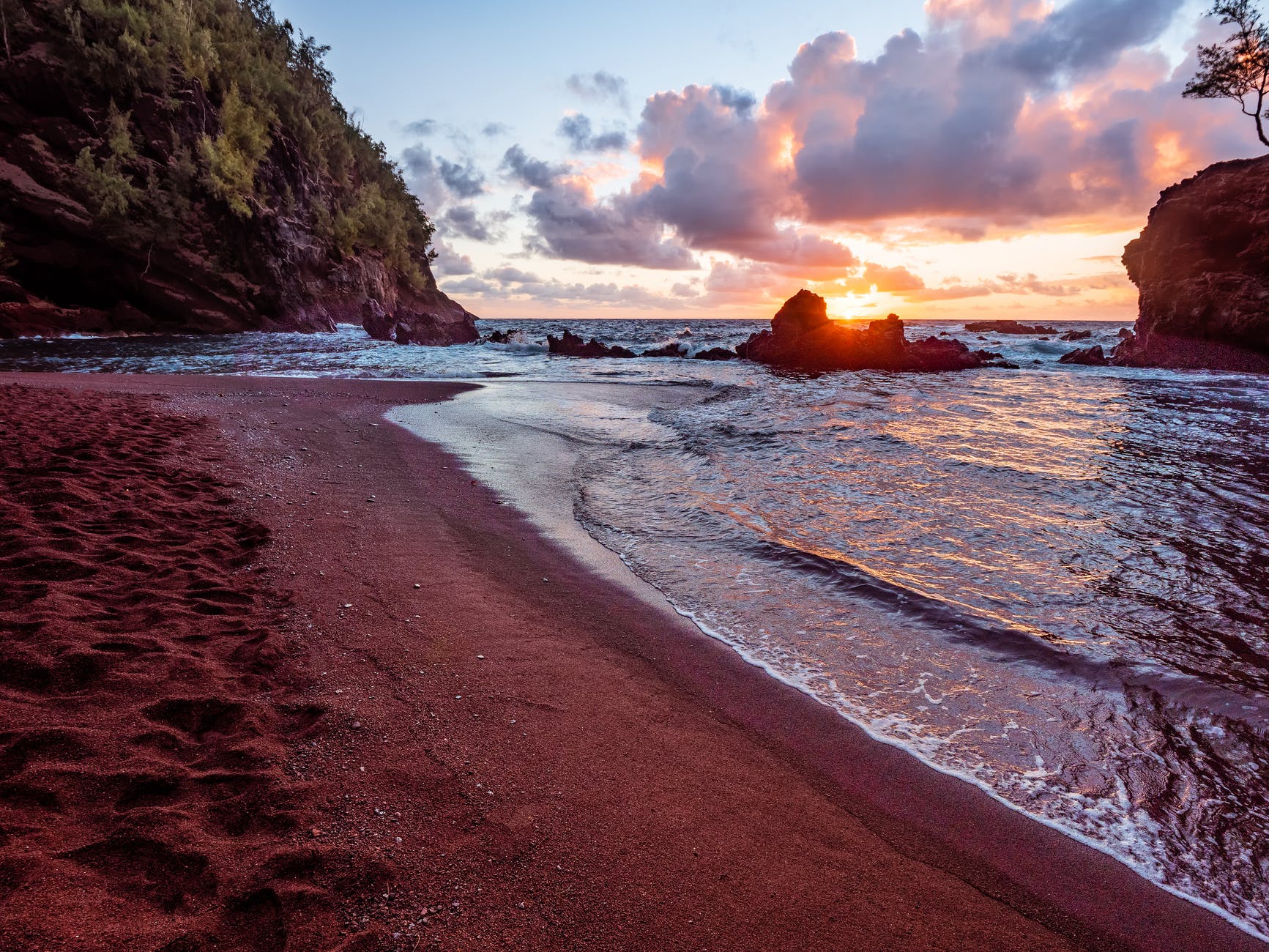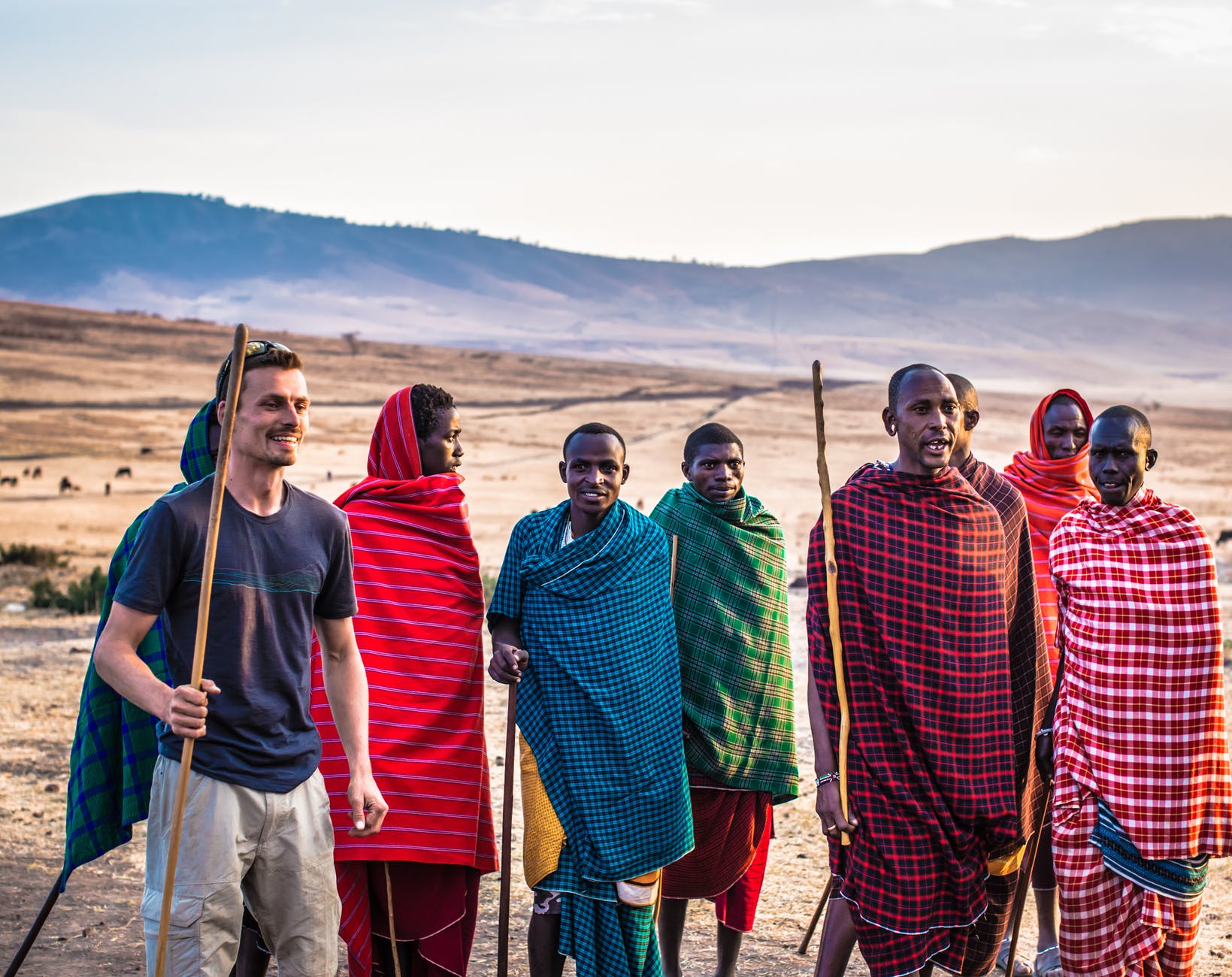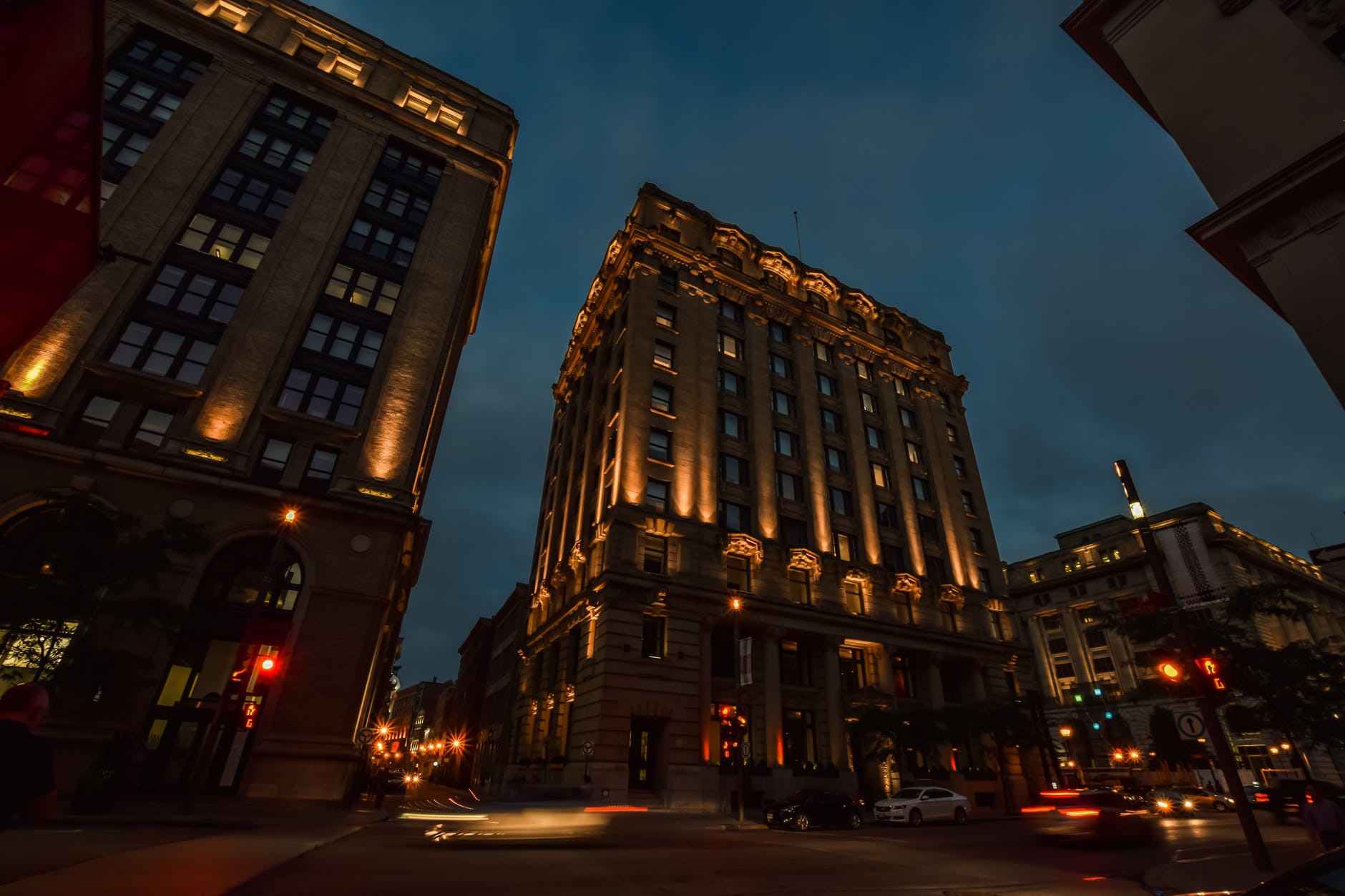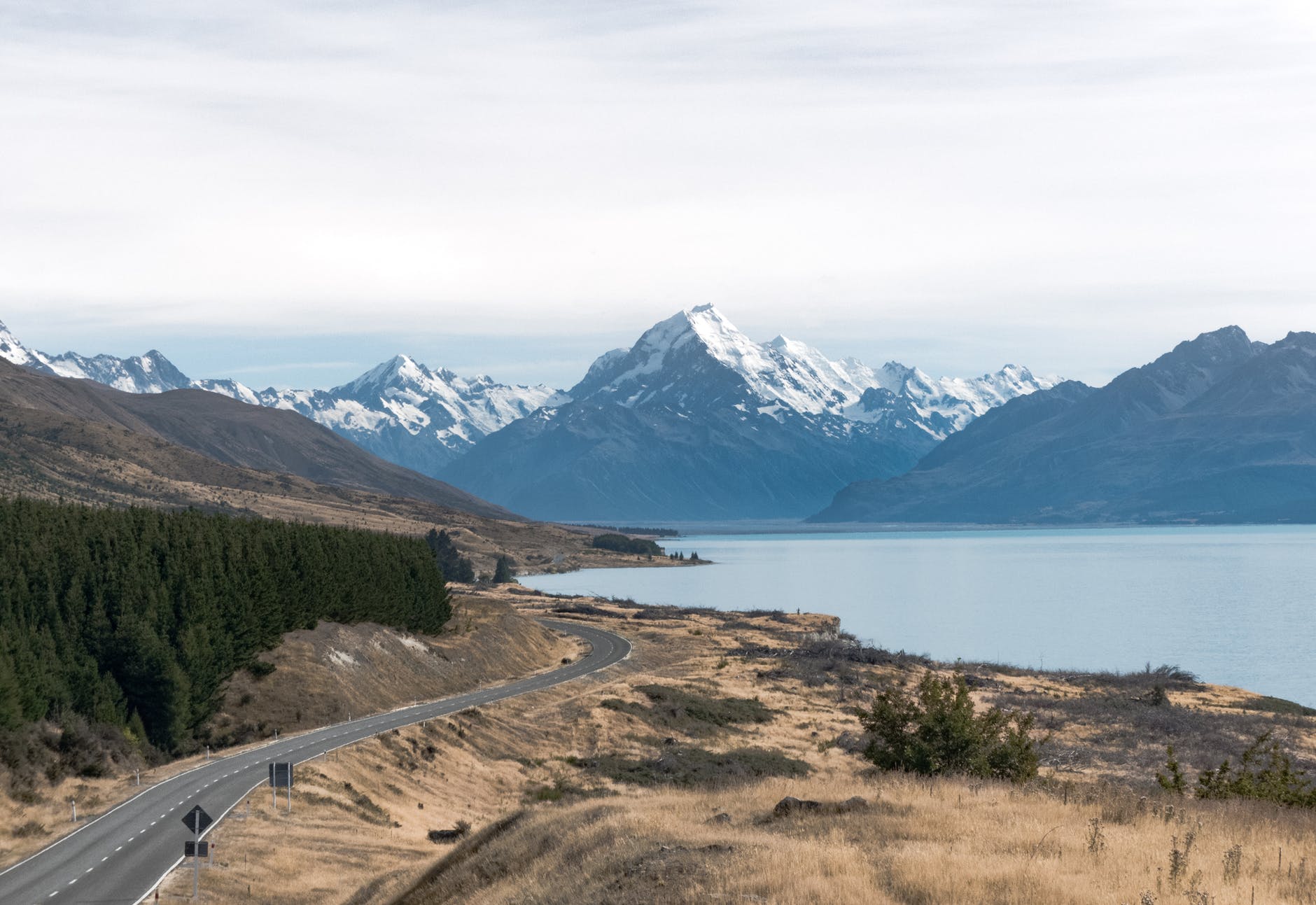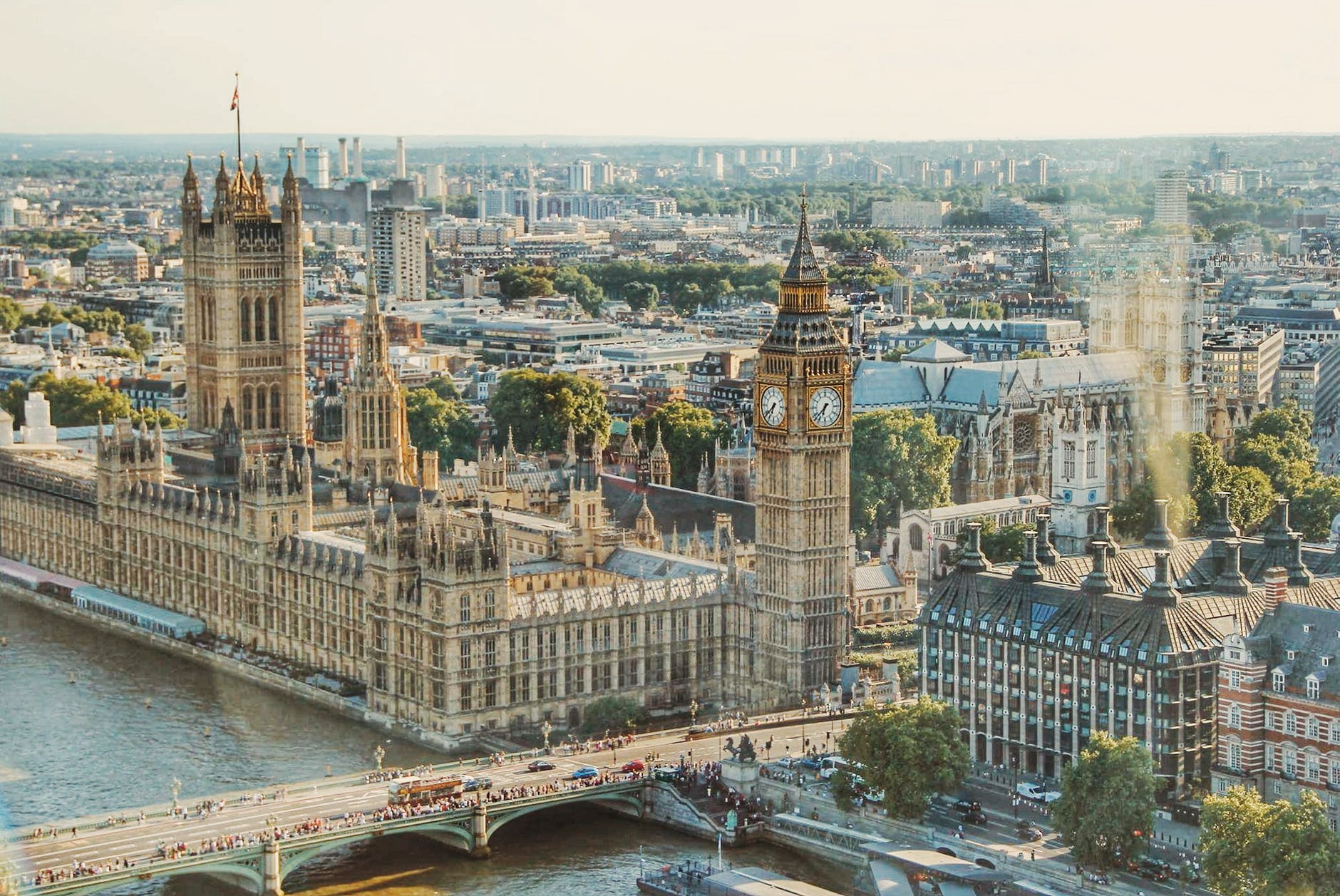Bird is a warm-blooded egg-laying vertebrate animal distinguished by the possession of feathers, wings, a beak, and typically by being able to fly. Birds are from one of six basic animal groups, with the others being amphibians, fish, invertebrates, mammals, and reptiles. Most Birds can fly, using powerful muscles to flap their wings, but few bird species do not have strong enough wings to fly, so these birds are flightless. The fossil record indicates that birds are the last surviving group of dinosaurs. Birds have wings whose development varies according to species. Birds are social, communicating with visual signals, calls, and songs, and participating in such behaviours as cooperative breeding and hunting, flocking, and mobbing of predators. Birds range in size and weight from the 5 cm (2 in) and 1.6-2 grams bee hummingbird to the 2.75 m (9 ft) and 104-156 kg ostrich. They are endothermic vertebrates, characterized by feathers, toothless beaked jaws, a high metabolic rate, a four-chambered heart, and a lightweight but strong skeleton. Most of the largest birds in the world are flightless which allows them to have denser bones and heavier bodies. Many species of birds are economically important as food for human consumption and raw material in manufacturing, with domesticated and undomesticated birds being important sources of eggs, meat, and feathers. Recreational bird watching is an important part of the ecotourism industry. Here are the top 10 largest bird species in the world (by body weight).
1.Ostrich
Ostrich is so unique and different to any other animal including members of their own family that is Ratitae Family. The flightless ostrich is the world’s largest bird. Ostriches have an average mass of 104 kg and average length of 210 cm. Male Ostrich has black feathers and the female has grey feathers. It is also thought that Ostrich has the largest eyes of any land vertebrate at 50 mm in diameter. The size of their eyes helps them to easily see predators like lions from a long distance. They have brilliant eye-sight which means they can see an object as far away as 3,5km during the day time. Ostrich is the fast runner of any bird or other two-legged animal and can sprint at over 70 km/hr, covering up to 5m in a single stride. All of the herd’s hens place their eggs in the dominant hen’s 3m-wide nest, though her own are given the prominent centre place; each female can determine her own eggs amongst others. The giant eggs are the largest of any living bird at 15cm long and weighing as much as two dozen chicken eggs, though they are actually the smallest eggs relative to the size of the adult bird.
Eggs hatch after 35–45 days incubation, and the male usually defends the chicks and teaches them to feed, although mums and dads cooperate in rearing the young. When threatened ostriches run although their powerful, long legs can be formidable weapons, capable of killing a human or a potential predator like a lion with a forward kick. Ostriches have inspired cultures and civilizations for 5,000 years in Mesopotamia and Egypt. Ostrich has three stomachs. Ostriches are native to Africa but are farmed all over the world, particularly for their feathers, skin which is used in leather products, and meat. Lacking teeth, ostriches swallow pebbles to grind their food. An adult ostrich carries about 1kg of stones at any one time. One Ostrich Egg can take up to 1, 5 hours to boil. Ostriches can go without drinking for several days, using metabolic water and moisture in ingested roots, seeds and insects, but they enjoy liquid water and frequently take baths where it is available. The ostrich brain weighs about 40 grams. Natural life span is 50 – 60 years. Territorial fights between males for a harem of two to seven females usually last just minutes, but they can easily cause death through slamming their heads into opponents.
2.Cassowary
Cassowary is the largest native vertebrate in Australian rainforests. It is the second heaviest bird in the world to the ostrich. It is the third tallest bird in the world. Cassowary looks like an odd combination of ostriches and turkeys. It has large body covered in black feathers, bluish skin of the head and reddish neck. Upper parts of the legs are blue while lower parts are grey in color. Cassowary has a helmet like crest on the head. It is usually 6 inches long and reaches 6.7 inches in height. Cassowary reaches between 55 and 129 pounds in weight. Females are larger than males. The cassowary egg is the third largest of all birds at about 584g. Cassowary is an omnivore (eats both plants and animals). It usually eats different types of fruit, seeds, shoots, fungi, small invertebrates and insects. There is no chewing in the eating process. Cassowary has excellent eyesight and sense of hearing. They can easily detect low-pitched sounds. Males build nests where females lay between 3 and 8 eggs. Eggs are greenish-blue in color. Female can use several different nests to deposit her eggs. Females are not responsible for the survival of eggs or young birds. Males are in charge for the incubation of the eggs that lasts 50 days. Young cassowaries are brown and covered in stripes. Also, males take care of the chicks until they reach the age of one year. Cassowaries are also excellent swimmers that can swim long distances.
Cassowary is look like a ‘giant prehistoric turkey’, but they are in fact descendants of dinosaurs. Cassowary is referred as the ‘most dangerous bird on Earth’. They will not attack for no reason. Like the emu and the ostrich, the cassowary is another flightless bird. Although they cannot fly, they can surely put up a fight, jumping as high as two metres from the ground, and they can run at a speed of up to 50 kilometres per hour. They use their casque and claw in self-defence. They attack up to 200 people every year. Of these 200, 70% of attacks occur due to people trying to get up close to the cassowary, wanting to feed them, causing the cassowary to feel threatened. The southern cassowary, also known as the double – wattled cassowary, Australian cassowary or two-wattled cassowary have an average weight of 45 kg and are around 155 cm long. Southern cassowaries are found in north-eastern Australia, Indonesia and New Guinea. Northern cassowaries also known as the single – wattled cassowary or golden-necked cassowary, are slightly smaller with an average weight of 44 kg and average length of 149 cm. They are endemic to northern New Guinea. As the Cassowary roams the rainforest they disperse the seeds into a new area of the rainforest in their own special fertilizer formula. Cassowary can survive 12-19 years in the wild and between 40 and 50 in captivity.
3.Emu
The emu belongs to a group of flightless running birds known as ratites, the most primitive of the modern bird families. Emus are endemic to Australia, where they are the largest native bird. It lives throughout most of the continent, ranging from coastal regions to high in the Snowy Mountains. It is the second tallest living birds in the world that can reach up to 190 cm tall. Emus are omnivores. They eat seeds, fruit, bark, nuts and stems. They also eat insects, small reptiles, amphibians and other small animals that they can handle. They require a large amount of water, drinking 9-18 litres daily. Emus are soft-feathered birds with long necks and legs. They weigh an average of 33 kg. Female emus are usually slightly larger than the males and have significantly wider rumps. Emus Have Big Bodies and Tiny Wings. They Are the Only Birds with Calf Muscles. They’re Fast Runners, High Jumpers, and Strong Swimmers. On top of the sheer size of their legs, a few special features help boost their strength.
Emus also have an impressive vertical leap, which can quickly carry the large birds up to 6.8 feet off the ground all without the help of wings. They only have 3 toes and a reduced number of bones. The female lays a clutch of eggs in the male’s nest over several days. Males Incubate the Eggs for 56 days and raise the Chicks. They store lots of fat when food is plentiful, providing fuel for leaner times, and also seem to have a sixth sense for finding water, sometimes trekking hundreds of miles to get it. Emu migrations are based on rainfall, according to the SCBI, which notes they mainly rely on the sight of rain-bearing clouds, but may also use other clues like the sound of thunder or the scent of wet ground. Emus are not very social. They have vestigial wings, which they flap when they run to stabilize themselves. They Can Be Helpful to Farmers. The lifespan is 10 to 20 years in the wild and up to 35 years in captivity.
- Penguin
Penguins are amazing birds. Most penguins live in the Southern Hemisphere. Large penguin populations can be found in countries such as New Zealand, Australia, Chile, Argentina and South Africa. Emperor penguins are endemic to Antarctica and are the tallest and heaviest of all living penguins weighing an average of 31.5 kg and measuring 114 cm in height. King Penguins are the second largest penguin species. King penguins weigh 13.6 kg on average and are 92 cm in length. Little Blue Penguins are the smallest type of penguin, averaging around 33 cm (13 in) in height. The fastest species is the Gentoo Penguin, which can reach swimming speeds up to 22 mph. There are 17–20 species of penguins alive today. Penguins live in many locations and habitats. Penguin feet are adapted to walk long distances. According to some animal experts, the penguin is one of the most streamlined animals in the world. Penguins spend around half their time in water and the other half on land. Most birds have hollow, air-filled bones to help them stay light for flight. Penguins adapted with solid bones instead. Penguins have adapted flippers to help them swim in the water. Penguins eat a range of fish and other sea life that they catch underwater.
Penguins ingest a lot of seawater while hunting for fish, but a special gland behind their eyes, the supraorbital gland filters out the saltwater from their blood stream. Like other birds, penguins don’t have teeth. Instead, they have backward-facing fleshy spines that line the inside of their mouths. These help them guide their fishy meals down their throat. Penguins have excellent hearing skills. Many male penguins gift female penguins with rocks in order to woo them. Penguin parents both male and female care for their young for several months until the chicks are strong enough to hunt for food on their own. Penguins are very social animals. Like all penguins, Emperor penguins are flightless but they have adapted to the harsh conditions of their environment which is the coldest for any breeding bird. Feathers provide up to 90% of their insulation and they are able to thermo regulate their core body temperature without altering their metabolisms. A group of penguins in the water is called a raft but on land they’re called a waddle.
5.Rhea
Greater rheas are flightless birds native to South America. Rhea can be found in open grasslands, pampas and woodlands of Argentina, Uruguay, Bolivia, Paraguay, Chile, Peru and Brazil. There are two species of rheas: Greater or American Rhea and Darwin’s Rhea. The greater rhea is the largest of all South American birds and is related to ostriches and emus. Greater rheas have an average mass of 23 kg and an average length of 134 cm. A small population of greater rheas has established itself in Germany. Lesser rheas, also known as Darwin’s rhea, are found in South America. It weighs on average 13.5 kg and has an average length of 96 cm. Body of rhea is covered with grey-brown plumage with dark patches on the neck and back. Abdomen and thighs are covered with white feathers. Rhea has strong legs with three toes that are designed for running. Although it is unable to fly, rhea can run very fast and reach the speed of up to 40 miles per hour. Wings provide stability during running.
Rhea is an Omnivore, it consumes both meat and plants. Different kind of seeds, fruits, roots, plants, lizards, insects, reptiles and rodents are normal part of rhea’s diet. Rheas also like to consume agricultural crops. These flightless birds use their long, powerful legs to outrun trouble. Females lay their eggs one every other day for a week or ten days in a ground nest of the male’s design. The male rhea incubates the eggs of all its mates for six weeks and cares for the newly hatched young. They aggressively guard their young during this period. Unlike other animals, males are fully responsible for building of the nest and care of the eggs and chicks after hatching. Rheas live in big flocks except during the breeding season. Sometimes they live with deer and other animals. Farmers often considered them as pests. Rhea eggs are collected for food and many people eat their meat. Their skins are used in the manufacture of leather. Maximum lifespan of the rhea in the wild is 15 years.
6.Turkey
The wild turkey is the largest species of bird that is able to fly. They weigh on average 13.5 kg and have an average length of 124 cm. Turkeys are quiet agile fliers staying close to the ground and flying for no more than 400 m at a time. Domestic turkeys are unable to fly as they are too fat. Individual turkeys have unique voices, this is how turkeys recognize each other. Turkeys are intelligent and sensitive animals that are highly social. They create lasting social bonds with each other and are very affectionate; rather similar to dogs. Turkeys have the ability to learn the precise details of an area over 1,000 acres in size. Like peacocks, male turkeys puff up their bodies and spread their elaborate feathers to attract a mate. The male is substantially larger than the female, and his feathers have areas of red, purple, green, copper, bronze, and gold iridescence. Female feathers are duller overall, in shades of brown and grey. The long fleshy object over a male’s beak is called a snood. Turkeys have 5000 to 6000 feathers. A turkey’s gender can be determined from its droppings, males produce spiral-shaped poop and females’ poop is shaped like the letter J. It can run at speeds of up to 25 miles per hour and fly as fast as 55 miles per hour.
There are six subspecies of wild turkey, all native to North America. Male turkeys are called “gobblers,” after the “gobble” call they make to announce themselves to females (which are called “hens”) and compete with other males. Wild turkeys are the same species as the domesticated turkey. They are native to North America but got their name from the domestic turkey which was misidentified as an unrelated species imported into Europe by Turkish merchants. The turkey is believed to have been sacred in ancient Mexican cultures. The Mayans, Aztecs and Toltecs referred to the turkey as the ‘Great Xolotl’, viewing them as ‘jewelled birds’. They can change the colors. Wild turkeys sleep in trees. A Female Turkey lays about 10 to 12 eggs, one egg per day, over a period of about two weeks. The eggs will incubate for about 28 days before hatching. Baby turkeys, called poults, eat berries, seeds and insects, while adults have a more varied diet that can include acorns and even small reptiles. There is one other species of turkey, the ocellated turkey, which can be found on the Yucatan Peninsula in Mexico. The meat from domesticated turkeys is widely eaten by people across the world.
7.Swan
This majestic and beautiful animal is well-known for being graceful and quite peaceful to look at. Swans are birds of the family Anatidae within the genus Cygnus. Often seen gliding across lakes, the swan has long represented elegance and refinement. A swan will mate for life. There are six to seven species of swan called the Black-necked Swan, Black Swan, Mute Swan, Trumpeter Swan, Tundra swan which includes the Bewick’s Swan and Whistling Swan, and the Whooper Swan. Mute swans (Cygnus olor) are the heaviest of all waterfowl weighing an average of 11.87 kg. They average 100-130 cm in length. Trumpeter swans weigh slightly less at 11.6 kg but are longer at 138-165 cm. Swans live in the flooded grassland, lakes and ponds, rivers and streams and wetlands habitats. The swans are generally found in temperate environments, rarely occurring in the tropics. Black swans are native to Australia. The black swans of Australia and New Zealand, which have been introduced to North America and Europe. Swans can fly as fast as 60 miles per hour. They are found in Australia, New Zealand, and South America. The swans are close relatives with geese and ducks. Swans are herbivores. Swans feed primarily on aquatic vegetation, with their long necks allowing them to feed on plants growing on river beds. They also eat small fish, frogs and worms. A Polish mute swan cob (Cygnus immutabilis), a morph of the mute swan, and a pure white version with pink legs instead of the usual black colour, has been verified as the largest bird to take flight weighing in at 23 kg. Swans have elongated, curved necks.
Swans have streamlined bodies, and their feet are webbed. Swans have beaks with saw like edges that appear like they have teeth. They have very strong wings with a wingspan of 3 meters or 10 feet. The swan has about 25,000 feathers in its body. Their calls consist of a loud, deep, sonorous, trumpet-like honking sounds, as well as peeps, hisses and gurgles. Swans build their nests on land out of twigs and leaves, and the female swan lays between 3 and 9 eggs. Swan eggs take between 35 and 42 days to hatch. The baby swans hatch out of their eggs after an incubation of just over a month. Swans couple will guard their baby swans furiously from predators. The swan’s main predator is the human, who hunts the swan for it’s meat and it’s feathers. A baby swan is called a cygnet. A male swan is called a cob, and a female swan is called a pen. A group of swans is called a bevy or a wedge in flight. The swan song is a metaphorical phrase for a final gesture, effort, or performance given just before death or retirement. The phrase refers to an ancient belief that swans sing a beautiful song in the moment just before death, having been silent during most of their lifetime. Several species are migratory. Some migratory swans travel to Iceland, Greenland, Scandinavia, Russia, Central Asia, China, and Japan. Swans live for approximately 20 to 30 years. It can live for up to 40 years in the wild.
8.Bustard
Great bustards (Otis tarda) weigh on average 10.6 kg and are 115 cm in length. Bustard gives an ostrich like appearance. These large creatures are rather shy, behavior varies from bird to bird. They breed in open grassland in Southern and Central Europe and Asia with 60% of the population resident in Spain and Portugal. The Arabian bustard, which lives across Southwestern Arabia and the Sahel region of Africa. They weigh between 4.5 and 11 kg and are therefore quite large, yet smaller than the kori. Kori bustard is large terrestrial bird that belongs to the family of bustards. The Kori bustard (Ardeotis kori) is Africa’s largest flying bird and a contender for the heaviest flying living bird weighing an average of 11.4 kg and measuring 150 cm in length. Kori Male Bustards are two times bigger than female Kori Bustards. The kori makes barking sounds to intimidate their potential attackers. The Kori bustard has a very impressive wingspan. The male bird has a wingspan of 230 to 275 cm. The female, considerably smaller, spans 80 cm across its wings on average. Kori bustards are omnivores. Their diet is mostly based on insects, snakes, lizards and small mammals. They occasionally consume berries and seeds. Kori bustards are covered with white, black, grey and brown feathers.
Kori bustards have black crest on the top of a head. Kori bustards have long necks and short bills. Their legs and feet are elongated and end with three fingers. Kori bustards are able to fly, but they spend most of the time on the ground. Kori bustards often walk near the zebras, antelopes and other animals that are gathered in herds to find food. Kori bustards are not migratory birds. They will leave their home ground only when water and food sources become scarce. Kori bustards can survive up to 30 years in the captivity. Kori bustards similarly help other animals. Carmine bee-eaters ride on their back and take full advantage of how the kori bustards stride through the grass. Insects get dislodged from their grassy perches and are quickly picked up by these opportunistic birds. People hunt kori bustards because of their meat. The great Indian bustard is a large ground bird with a height of about one metre, you can find them in India and Pakistan. The Australian bustard, as suggested by its name, you can encounter this bird all across Australia and southern New Guinea. Female lays 1 – 2 eggs in a shallow depression in the ground. Females take care of the eggs and young chicks. Incubation lasts 23 to 24 days. Five weeks after hatching, young birds are ready for independent life.
9.Albatross
Albatrosses are large seabirds which belong to the biological family Diomedeidae. They live in the region of the Southern Ocean and the North Pacific Ocean. Albatross of the biological family Diomedeidae has 22 species. Out of 22 albatross species, 19 are officially endangered. There are four main species of albatross: Great Albatrosses, North Pacific Albatrosses, Mollymawks and Sooty Albatrosses. Great Albatrosses are among the largest of flying birds. Albatrosses are very large and spend much of their life in the air. Albatross can fly as fast as 60 mph. However, because of their long wings do not have strong muscles, they cannot flap while they fly. Wandering albatrosses spend most of their life in flight and can remain in the air without flapping for several hours at a time. Albatrosses have some of the longest ranges of all birds and some individual wandering albatrosses have been known to circumnavigate the Southern Ocean three times in one year. The wandering albatross (Diomedea exulans) is also known as the snowy albatross, the white-winged albatross and the goonie. It weighs an average 11.9 kg and is up to 135 cm in length. It has the longest wingspan of any living bird ranging from 2.5 m to 3.5 m and unverified reports put the largest wingspans at 4.22 m and 5.3 m. They can coast for several miles in just a single flap. Albatross sleep in flight. The albatrosses ate and found their food at the surface of the sea. The bill is large, strong and sharp. This bill is made of horny plates. Along the sides are the two “tubes”. They are actually long nostrils.
The tubes of all albatrosses are on the sides of the bill. They help the albatrosses develop their sense of smell a lot. The feet have no last toe and the three other toes are all webbed. Their legs are quite strong, and they can walk well on land. All birds have a large gland at the top part of their bill, above their eyes. Albatrosses use them to help take out saltwater, it makes a liquid that makes the saltwater drip out of their nose. The adult albatrosses usually have a dark upper-wing and back, and white undersides when they are getting ready to take flight. They eat squid, fish and krill. Sometimes, they may also eat carrion and or other kinds of zooplankton. Albatrosses come ashore to make their nests, mostly on islands, and usually near the nests of other birds. They have the longest incubation period of any bird. Albatross lay just one single egg every 2 years. The male and female take turns feeding and guarding their chicks until it is large enough to care for itself. Albatross are known to live well into their sixties, even reaching up to seventy years old. Scientists were baffled to discover a 63 year old bird that was still laying eggs and raising chicks. They can live to be over 60 years old. They spend 80% of their lives at sea.
10.Pelican
Pelican is an amazing bird that can be found in all continents except on the Antarctica. The Pelican family is at least 30 million years old. There are eight species of pelicans. The Dalmatian pelican (Pelecanus crispus) is the largest member of the pelican family and perhaps the largest freshwater bird in the world in length and weight by swans. Dalmatian pelicans are found in lakes, rivers and estuaries in south east Europe, Russia, India and China. They weigh on average 11.5 kg and are 183 cm in length. It has a wingspan similar in size to the great albatrosses and is one of only 4 species of birds having verified wingspans of over 350 cm, the others being the wandering albatross, the southern royal albatross and the great white pelican. The American White Pelican grows a temporary “Horn”. Pelican has the largest bill of all birds. It can reach 18 inches in length. Pelicans technically have nasal openings. However, in all eight species, the nostrils are sealed off, buried under the beak’s horny sheath. Pelicans predominantly breathe through their mouths. Underneath the bill, pelicans have throat pouch that can hold 3 gallons of water.
Pouch is mainly used for feeding. They don’t store food in the Pouch on their Bills. Some males have colorful feathers while others have ability to change the color of the pouch, neck and bill into bright colors during courtship. Pelican is easily recognized by its large body, short legs with webbed feet. Webbed feet are used for swimming and diving. They can fly to the height of 10 000 feet using the warm wind currents. It can eat 4 pounds of fish per day. Main food of Pelicans is fish, they can also eat turtles, crustaceans and tadpoles. Very hungry pelicans will even attack and eat seagulls. While diving for fish, pelicans can end up in fishing nets. Brown Pelicans are on the list of endangered species. Both males and females are in charge of the building of the nests that are usually located on the trees near the water. Nests are built using the feathers, leaves and sticks. Female lays 1 to 3 eggs. Incubation period lasts between 28 and 36 days. Young pelicans eat by scooping the food from the bills of their parents. Pelicans can survive between 10 and 30 years in the wild. Pelicans are very social birds. They live in large colonies composed of several hundreds of birds.

